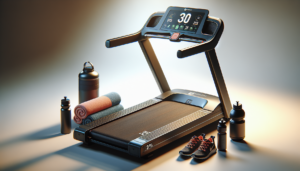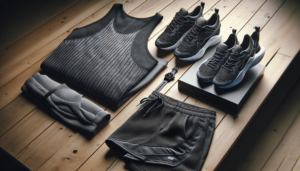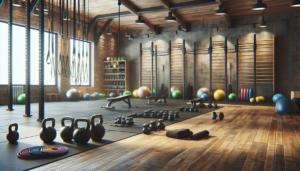Introduction to Muscle Group Workouts
Working out is an essential part of a healthy lifestyle, helping to build strength, endurance, and overall fitness. However, to maximize the effectiveness of your gym sessions, it’s crucial to understand what muscle groups to workout together. By targeting specific muscle groups in each workout, you can optimize your time and energy for the best possible results.
Why It’s Important to Group Muscle Workouts
Grouping muscle workouts offers several key benefits for your fitness journey:
- Allows each muscle group adequate recovery time between sessions
- Prevents overtraining and reduces injury risk
- Enables you to focus on proper form for each targeted muscle
- Optimizes gym time by working complementary muscles together
By strategically grouping your workouts, you can ensure that each muscle gets the attention it needs to grow stronger over time.
Overview of Major Muscle Groups
The human body contains over 600 muscles, but for the purposes of strength training, we can divide them into several key categories:
| Upper Body | Lower Body | Core |
|---|---|---|
| Chest Back Shoulders Biceps Triceps |
Quadriceps Hamstrings Glutes Calves |
Abdominals Obliques Lower Back |
While smaller accessory muscles assist the major muscle groups, most workout splits focus on these primary movers. Training each major muscle group at least twice per week is recommended for optimal strength gains.
Popular Training Splits
There are several common ways to structure your workouts and group muscle training for maximum effect. The four most popular training splits are:
Full-Body Training Split
A full-body split targets all the major muscle groups in a single workout. Advantages include:
- Time-efficient for busy schedules
- Ideal for beginners learning proper form
- Elevates heart rate for cardio benefits
However, full-body workouts can be taxing, requiring substantial energy and recovery time. They work best for 2-3 gym sessions per week.
Upper/Lower Training Split
The upper/lower split divides workouts into upper body and lower body days. A typical weekly routine would include:
| Day 1 | Day 2 | Day 3 | Day 4 |
|---|---|---|---|
| Upper | Lower | Rest | Repeat |
This allows you to hit each muscle group twice per week. It also provides time for accessory motions and proper recovery.
Push/Pull/Legs Split
The push/pull/legs split is a popular training method that segments workouts like this:
- Push: chest, shoulders, triceps
- Pull: back, biceps, traps
- Legs: quads, hamstrings, glutes, calves
This approach allows you to target muscle groups from all angles. However, it requires more frequent gym visits for optimal results.
Bro Split
The Bro Split is a controversial method that dedicates each gym day to a single muscle group:
| Monday | Chest |
|---|---|
| Tuesday | Back |
| Wednesday | Legs |
| Thursday | Shoulders |
| Friday | Arms |
Proponents argue this allows maximum focus and recovery. Critics say it’s not optimal for strength or hypertrophy. It remains popular among bodybuilders.
How to Choose the Right Training Split
With several effective training splits available, how do you determine the best approach for your needs? Key factors to consider include:
Consider Your Training Goals
Your training goals are the biggest factor in choosing a workout split. Are you aiming for:
- Overall strength and fitness
- Muscle growth (hypertrophy)
- Fat loss and toning
- Endurance and stamina
A full-body or upper/lower split is well-suited for general fitness. Hypertrophy may benefit from a push/pull/legs or bro split routine.
Frequency and Recovery
Consider how often you can realistically hit the gym each week. Strength training requires adequate rest for muscle recovery. Generally:
- 1-2 days per week: Full-body workouts
- 3-4 days per week: Upper/lower or push/pull/legs split
- 5-6 days per week: Bro split or increased volume
Remember, recovery is crucial. More is not always better when it comes to lifting weights.
Adjusting for Injuries or Limitations
If you’re dealing with an injury or mobility issue, you may need to modify your training split. For example:
- Avoid or reduce weight for injured muscles
- Increase focus on unaffected muscle groups
- Incorporate mobility work and physical therapy
Never work through pain. Adjust your plan as needed to prevent worsening an injury.
Optimizing Your Workout Routine
Once you’ve selected a training split, a few key tips can help optimize your gym sessions:
Balancing Major and Accessory Muscle Groups
While major muscle groups are the focus, don’t neglect the accessory muscles. For example:
- Chest press + tricep extensions
- Rows + bicep curls
- Squats + calf raises
Minor muscles support the movement of large muscle groups. Incorporating them creates balance.
Incorporating Rest Days
Rest days are essential for muscle recovery and growth. Depending on your training split, aim for at least 1-2 full rest days per week.
You can engage in light activity on rest days, such as:
- Walking or gentle cardio
- Stretching and mobility work
- Yoga or Pilates
The key is to avoid taxing the muscles you’re working in the gym. Let them fully recover.
Tracking Progress and Making Adjustments
To optimize your training, consistently track your workouts and progress. Log details like:
- Weight lifted for each exercise
- Number of sets and reps
- Difficulty level or effort exerted
By analyzing your results over time, you can identify if and when changes are necessary to your routine. Plateauing or stalling on progress may mean it’s time to switch up the muscle groups you’re pairing or adjust volume and frequency.
Conclusion
There’s no one-size-fits-all approach to strength training, but understanding what muscle groups to workout together is key for an effective gym routine. By selecting a training split that aligns with your goals and optimizes recovery, you can make the most of your workouts.
Key Takeaways
Remember these key points when planning your training:
- Focus on training major muscle groups
- Select a workout split based on goals and frequency
- Allow for adequate rest and recovery
- Track progress and adjust as needed
Next Steps in Your Fitness Journey
Armed with this knowledge, you can confidently attack your workouts and make progress toward your fitness goals. Focus on consistency, proper form, and routine optimization. With dedication, you’ll be amazed at the strength and muscle gains you can achieve.






